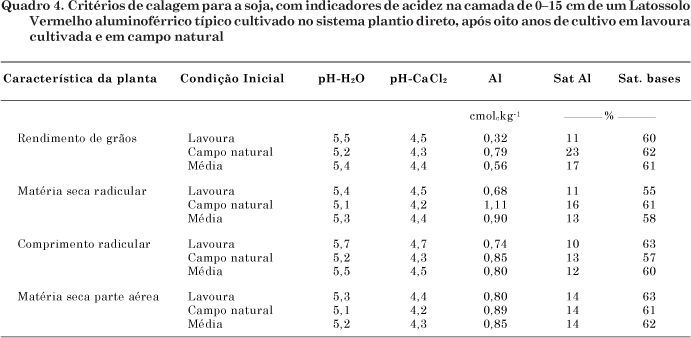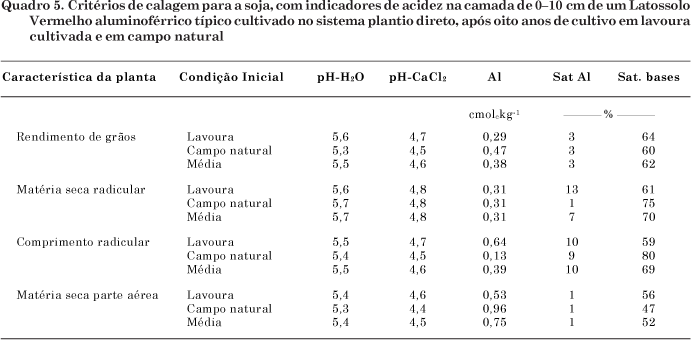Lime recommendations developed for conventional systems are being used in no-tillage systems with different dynamics of the acidity attributes, due to organic matter and nutrient accumulation on the superficial layer and lower aluminum toxicity. This study associated different acidity indicators of a Rhodic Hapludox after eight years under no-tillage system with soybean plant characteristics in order to establish liming criteria. Two field experiments were compared, both under no-tillage for eight years; one had previously been under conventional tillage and the other under natural pasture, and presented different acidity levels owing to previous liming. Undisturbed soil samples were collected in PVC columns, in which the soybean plants were grown for 25 days. Lime criteria were obtained by derivation of equations relating soybean grain yield and plant characteristics with the following soil acidity indicators: water and CaCl2 pH, exchangeable aluminum, aluminum saturation, exchangeable Al/Ca + Mg ratio and base saturation. A pH in water of 5.5 and base saturation of 62 % were the most suitable liming criteria for soil samples from the 0 to 15 cm as well as from the 0 to 10 cm depth soil layers. Liming criteria can also be determined, in the short term, by growing plants in undisturbed soil columns, preferentially using root characteristics.
soil acidity indicators; plant characteristics; soil layers







